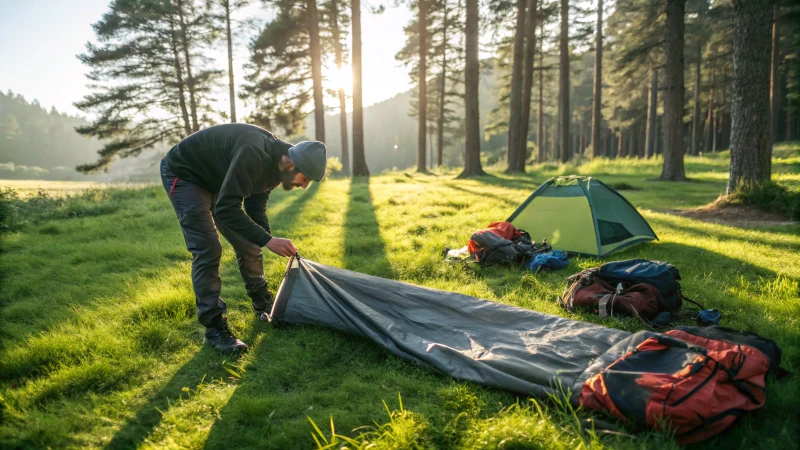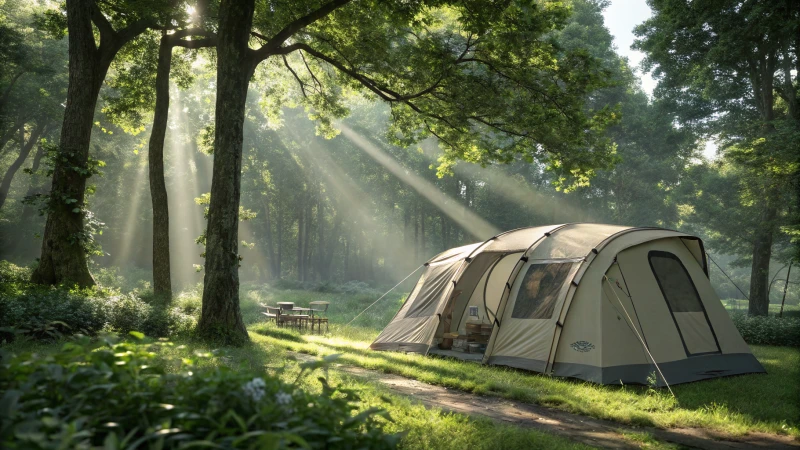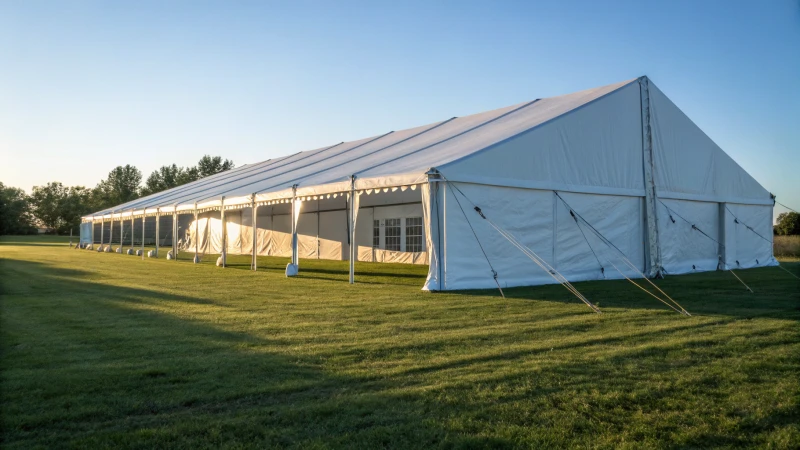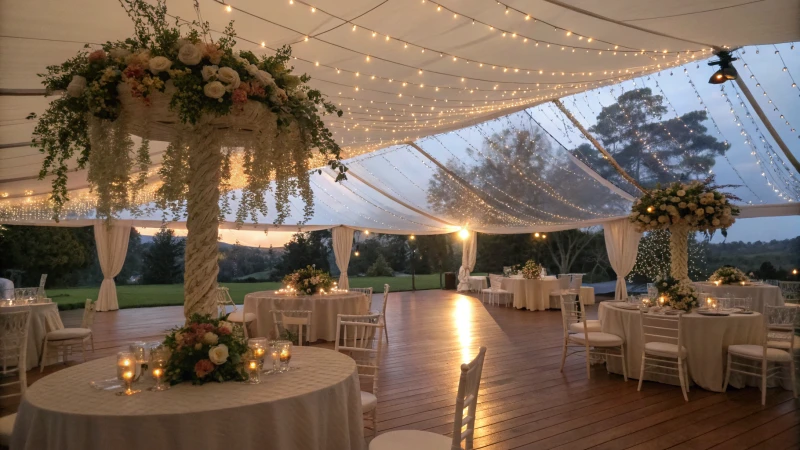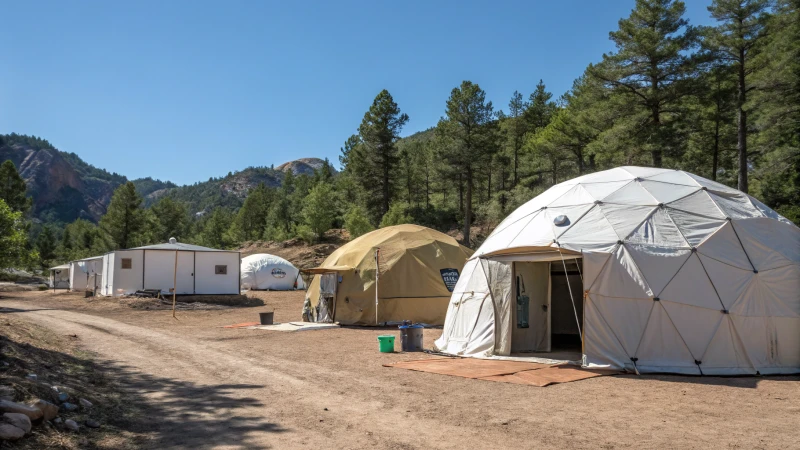
Ever tried setting up a tent in a rush during a storm? Disaster relief shelters need to be robust and quick to assemble.
The ideal tents for disaster relief are durable, easy to assemble, and adaptable to various climates. Top choices include frame tents, geodesic domes, and inflatable tents due to their stability and rapid deployment.
I remember my first experience with setting up a tent in an emergency. The pressure was immense, but having the right kind of tent made all the difference. Frame tents, for instance, are incredibly durable with their sturdy aluminum or steel frames, perfect for long-term shelters or command centers. Geodesic domes excel in harsh weather due to their stable dome shape and spacious interiors. Then there are inflatable tents—super quick to set up and great for emergency medical units or remote locations.
Each type has its unique benefits, so understanding the specific needs of the affected area is crucial. Whether it’s about braving tough weather conditions or setting up a quick medical facility, choosing the right tent can provide both safety and comfort to those in need.
Frame tents are difficult to set up quickly.False
Frame tents are designed for rapid deployment, making them suitable for emergencies.
Geodesic domes offer excellent stability in high winds.True
The structure of geodesic domes distributes stress evenly, enhancing wind resistance.
What are the key features of disaster relief tents?
Ever wondered how those lifesaving disaster relief tents are designed to withstand the worst?
Disaster relief tents are built with features like durability, rapid setup, weather resistance, portability, scalability, ventilation, and insulation to ensure they provide effective shelter during emergencies.

Durability
I’ve often marveled at the resilience of disaster relief tents. Imagine being in the middle of a storm with nothing but a tent over your head. These tents need to be made from tough materials like ripstop canvas or PVC-coated polyester to handle harsh weather conditions. I’ve seen aluminum frames do wonders in adding that extra layer of stability and longevity.
Ease of Setup
Time is of the essence in emergencies. I recall a time when a pop-up tent saved the day, setting up in under five minutes with no tools required! These quick-setup tents are vital, especially when you have a small team working under pressure.
| Type | Setup Time | Required Tools |
|---|---|---|
| Frame Tents | 30-60 mins | Basic tools |
| Inflatable | 10-15 mins | Air pump (included) |
| Pop-Up | < 5 mins | None |
Weather Resistance
Facing unpredictable weather is part of the package. I remember once testing tents with reinforced seams and waterproof coatings – a real game-changer in keeping dry and safe from the elements. Features like these ensure protection against extreme weather1.
Portability
Getting these tents to remote locations can be challenging. That’s why lightweight and compact designs are crucial. I once had to pack several tents into a small vehicle, and it was the portability that made it all possible.
Scalability
Modular designs offer amazing flexibility. You never know when you might need to expand shelter space, and these tents allow for easy adjustments, which is a lifesaver in dynamic situations.
Ventilation and Insulation
Comfort is key, whether you’re in a hot or cold climate. I recall the relief I felt stepping into a well-ventilated tent on a scorching day. Adjustable vents and mesh panels make a huge difference. Similarly, insulated walls or heating options are essential in keeping warm during cold spells.
For more insights on modular designs2, it’s worth exploring how industry trends enhance adaptability. Also, understanding lightweight materials3 can help in optimizing portability without sacrificing durability.
Disaster relief tents are made from ripstop canvas.True
Ripstop canvas is commonly used for its durability and weather resistance.
Inflatable disaster tents require basic tools for setup.False
Inflatable tents typically require only an air pump, not basic tools.
How Do Different Tent Types Compare in Disaster Situations?
When disaster strikes, the choice of tent can be the difference between chaos and comfort.
In disaster scenarios, different tent types offer unique benefits such as stability, quick setup, and weather resistance. Frame tents are durable and customizable, geodesic domes excel in harsh conditions, while inflatable tents ensure rapid deployment. Selecting the right tent type is crucial for effective disaster relief.
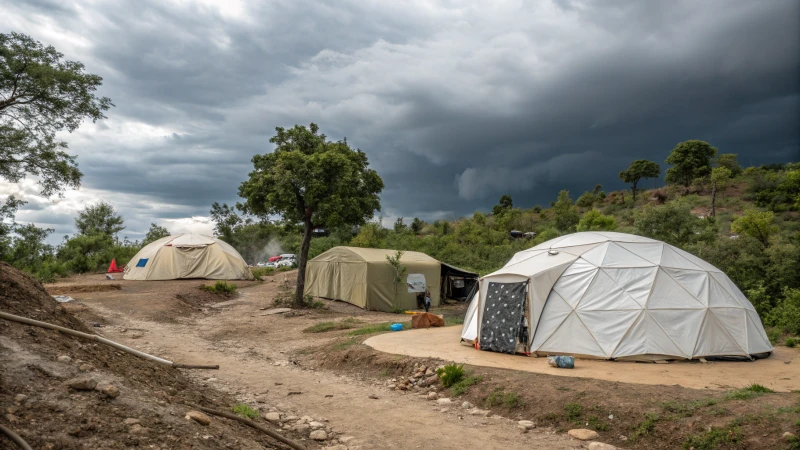
Frame Tents: Versatility and Durability
I remember the first time I saw a frame tent being set up—it was like watching a giant puzzle come to life. These tents are my go-to for situations where we need something that can withstand time and weather. Their sturdy aluminum or steel frames make them perfect for long-term shelters or command centers. I’ve seen them transform into medical facilities with ease due to their modular design. Though they require more time to set up compared to other tents, the payoff is their adaptability to various needs in disaster relief.
| Features | Benefits |
|---|---|
| Sturdy Structure | Excellent for long-term deployment |
| Modular Design | Customizable and expandable |
| Quick Setup | Requires minimal tools for assembly |
Frame tents4 stand out for their robust construction using aluminum or steel frames, making them an excellent choice for long-term shelters, command centers, or medical facilities.
Geodesic Domes: Stability in Adverse Conditions
The geodesic dome is like the superhero of tents. Its stability in adverse weather conditions—heavy rain, snow, you name it—is unmatched. I once witnessed a geodesic dome standing tall during a storm that brought down trees around it. The self-supporting design makes it ideal for challenging terrains, offering spacious interiors without central support poles, making them perfect for community shelters or storage.
Geodesic dome tents5 truly shine in environments where nature tests our limits with wind and snow.
Inflatable Tents: Rapid Response Essentials
In a crisis, every second counts. That’s where inflatable tents come into play. I’ve seen these lifesavers go up within minutes, providing critical shelter when it’s needed most. Their air-filled frames mean minimal manpower is required for setup, making them invaluable in emergency medical situations or remote areas. Plus, they’re lightweight and can be equipped with climate control systems to handle any weather Mother Nature throws their way.
| Features | Benefits |
|---|---|
| Quick Setup | Deploys rapidly with minimal manpower |
| Lightweight | Easy transportability to remote locations |
| Climate Control | Adaptable to various weather conditions |
Ridge Tents: Simplicity and Reliability
When I think of ridge tents, I think of simplicity at its best. Their A-frame design might be basic, but it’s incredibly reliable. They’re perfect for small groups or families needing immediate shelter post-disaster. I love how they can be erected with just basic tools and minimal training—ideal when resources are stretched thin.
While not as versatile as some others, ridge tents6 get the job done when time and resources are limited.
Military-Grade Tents: Built for Tough Environments
These are the tanks of the tent world. Built with high-durability materials like ripstop canvas or PVC-coated polyester, military-grade tents are designed for the long haul in harsh environments. I’ve seen them used as field hospitals or command centers because of their fireproof and waterproof properties.
Military-grade tents offer robust solutions where longevity and protection against elements are paramount—essential for comprehensive relief operations7.
Tunnel Tents: Ample Space and Aerodynamics
Tunnel tents remind me of the magic of smart design—long and tubular; they offer ample space while maintaining an aerodynamic shape that resists wind effectively. They’re lightweight, compact, and perfect for group shelters or relief workers needing a reliable temporary home.
Tunnel tents8 optimize space without compromising stability, making them suitable for extended use in various environments.
Pop-Up Tents: Instant Shelters for Urgent Needs
pop-up tents are the epitome of convenience. Their instant setup capability has saved me more times than I can count during initial response efforts. Lightweight and portable; they provide immediate coverage in urgent situations.
pop-up tents provide crucial immediate coverage when time is of the essence.
Frame tents require more setup time than other types.True
Frame tents have a robust structure needing detailed assembly.
Inflatable tents are not suitable for rapid deployment.False
Inflatable tents are designed for quick setup with minimal manpower.
What Are the Best Tent Options for Harsh Weather Conditions?
Weathering the elements is no joke when you’re out in the wild. A tough tent is your best ally.
The best tents for harsh weather are geodesic domes, tunnel tents, and military-grade options. These designs provide unmatched stability and durability, ready to brave the fiercest storms while keeping you snug and safe.
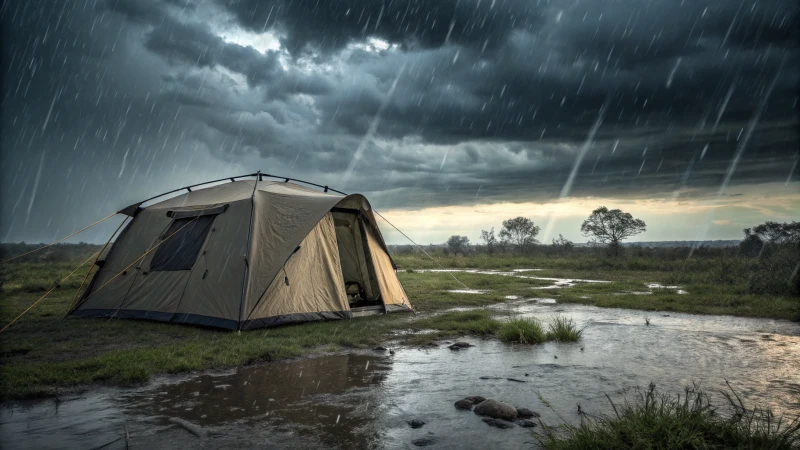
Geodesic Dome Tents
You know, there was this one time I found myself camping in the Rockies, and boy, was the weather unpredictable! A geodesic dome tent saved the day—or rather, the night. These tents have this incredible multi-pole structure that distributes stress evenly. It’s like having a superhero cape against heavy snow and brutal winds. The design cleverly avoids flat surfaces, making it a fortress against the elements.
Features:
- Stability: Perfect for those high-altitude adventures where Mother Nature loves throwing surprises.
- Space: Thanks to fewer interior poles, there’s ample room inside—ideal when you’re sharing with friends or have gear to stash.
Example Models: Consider models like the North Face VE 25 or Mountain Hardwear Trango 2 for their proven track record in harsh conditions.
Tunnel Tents
Once, during a group camping trip along a windy coast, I realized how much I valued my tunnel tent. Its aerodynamic shape was more than just cool—it was functional, cutting through gusts like a knife through butter. These tents offer spacious interiors without sacrificing sturdiness, making them perfect for group outings or when you need that extra room for gear.
Features:
- Wind Resistance: Built for those relentless winds that seem to come out of nowhere.
- Capacity: Great for groups or families who love camping together and need a roomy, reliable shelter.
A great choice for those needing ample space and robust weather protection.
Military-Grade Tents
Now, if you’re talking about resilience and toughness, military-grade tents are the titans of the tent world. Crafted from high-performance materials like ripstop canvas or PVC-coated polyester, these tents are as tough as they come. Once, while volunteering during a relief operation, I saw firsthand how these tents stood up to prolonged use in severe environments.
| Feature | Description |
|---|---|
| Material | Ripstop canvas ensures resilience against tears. |
| Design | Often modular, allowing for various configurations. |
Use Cases: Perfect for multi-purpose setups, including field hospitals or command centers during relief operations.
Considerations for Choosing a Tent
When choosing a tent for harsh weather, I’ve learned to keep these factors at the forefront:
- Material Quality: Always go for high-grade materials that can withstand wear and tear.
- Ease of Setup: Trust me; when the weather turns nasty, quick assembly is your best friend.
- Ventilation: Ensuring good airflow can save you from waking up in a damp tent due to condensation.
Finding the right balance between these features not only makes your outdoor experience more enjoyable but also ensures you’re prepared for whatever Mother Nature decides to throw your way. Happy camping!
Geodesic dome tents are best for high altitude camping.True
Their multi-pole structure offers stability against snow and wind.
Tunnel tents are unsuitable for group camping.False
Tunnel tents provide spacious interiors ideal for groups.
How Can I Ensure Efficient Deployment of Relief Tents?
Imagine being in the thick of a disaster, where every minute counts to provide shelter and hope to those in need.
To efficiently deploy relief tents, focus on pre-planning logistics, selecting tents suited for local conditions, training personnel in setup procedures, and maintaining a stockpile of essential equipment.
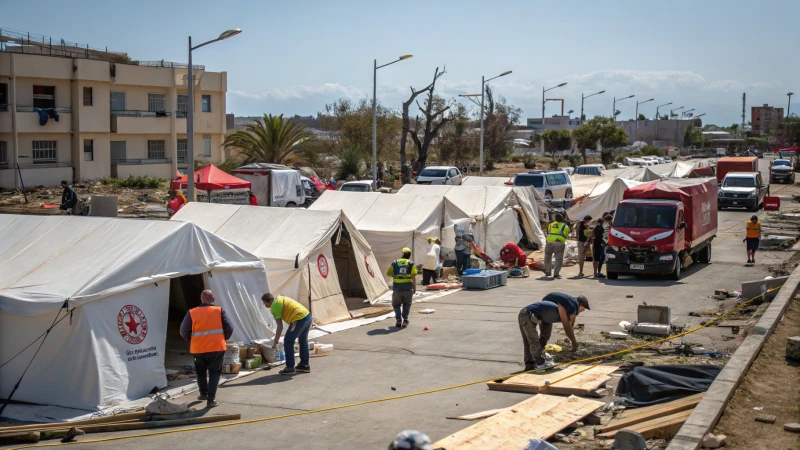
Key Elements for Efficient Deployment
Pre-Planning Logistics
When I think back to my first deployment experience, it was like orchestrating a complex symphony. From assessing potential disaster areas9 to securing transport routes and establishing communication lines, pre-planning logistics ensures resources reach affected areas swiftly. I remember partnering with local businesses and using digital tools to optimize supply chains, which was a game-changer in speeding up our response time.
Choosing the Right Tent Types
I’ve learned that the tent you choose can significantly impact its effectiveness. For instance:
- Frame Tents: These are my go-to for long-term shelters because of their sturdy and modular design.
- Inflatable Tents: Perfect for when you need a rapid response in setting up emergency medical units.
| Tent Type | Key Features | Best Uses |
|---|---|---|
| Frame Tents | Sturdy frames, modular design | Long-term shelters |
| Inflatable Tents | Quick setup, lightweight, climate control | Emergency medical units |
| Geodesic Domes | Wind resistance, spacious interiors | Harsh weather community shelters |
Selecting the appropriate tent ensures effective utilization and comfort for inhabitants.
Training Personnel
It’s not just about having the right tents; it’s about knowing how to set them up quickly and safely. We conduct regular drills and collaborate with experienced NGOs10 to enhance our training programs. I’ve seen firsthand how skilled teams can dramatically reduce setup times while ensuring everything meets safety standards.
Maintaining Equipment Stockpiles
Having an organized inventory of essential items like spare parts, tools, and emergency kits11 is vital. One of my early mentors taught me that being prepared means less scrambling when every second counts. It’s all about ensuring no delays during deployment.
Environmental Considerations
Understanding local climates and terrains is crucial. For instance, I’ve used geodesic domes in windy areas and frame tents in stable terrains to optimize shelter efficacy while minimizing environmental impact. Opting for environmentally friendly options like tents made from recycled materials also aligns with our sustainability goals.
Assessing the local environmental impact12 before deployment helps us plan better and act responsibly.
Frame tents are ideal for short-term emergency shelters.False
Frame tents are better suited for long-term shelters due to durability.
Pre-planning logistics ensures swift resource delivery in disasters.True
Effective logistics planning helps resources reach affected areas quickly.
Conclusion
This article discusses the best tents for disaster relief, highlighting frame tents, geodesic domes, and inflatable options based on durability, ease of setup, and adaptability to various climates.
-
Explore materials that enhance tent durability in extreme weather, ensuring longevity and occupant safety. ↩
-
Learn about flexible tent designs that allow for quick expansion to meet changing needs in disaster areas. ↩
-
Discover materials that improve tent portability while maintaining strength and durability for disaster situations. ↩
-
Explore why frame tents are favored for their robust construction and modularity in disaster scenarios. ↩
-
Learn how geodesic domes withstand severe weather conditions effectively. ↩
-
Understand the simplicity and reliability of ridge tents when resources are limited. ↩
-
Discover how military-grade tents offer durability and protection in harsh conditions. ↩
-
Find out why tunnel tents are preferred for their spaciousness and wind resistance. ↩
-
Discover tools and strategies to streamline logistics and improve disaster response efficiency. ↩
-
Explore how NGOs can offer practical training to enhance your disaster response team’s skills. ↩
-
Ensure your stockpile includes all necessary items by checking this comprehensive list. ↩
-
Learn about the ecological effects of temporary shelters and how to mitigate them. ↩



